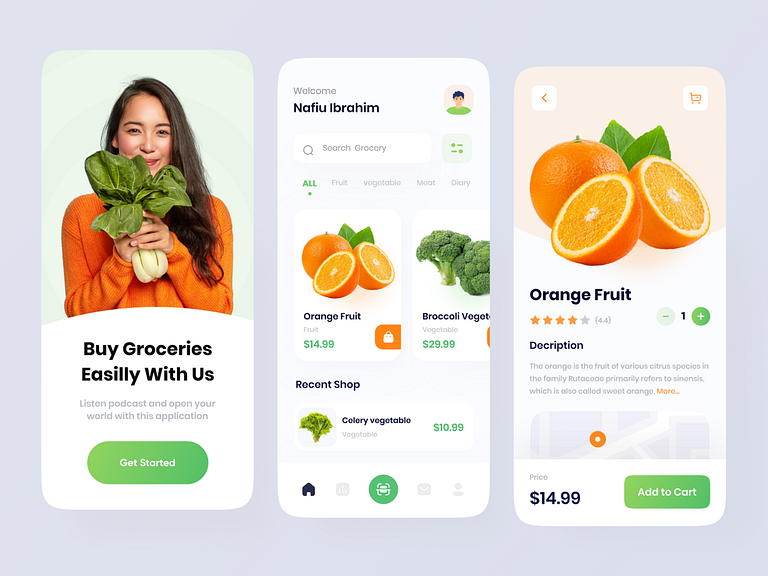
In the ever-evolving landscape of retail, grocery apps have emerged as game-changers, revolutionizing the way we shop for our daily needs. Behind the scenes, these apps employ sophisticated technologies to manage inventory efficiently and offer a personalized shopping experience. Let’s delve into the mechanisms that power these apps and how they enhance our grocery shopping.
1. Real-Time Inventory Management
At the core of any successful grocery app is its ability to manage inventory in real-time. Here’s how it works:
- Integration with Point-of-Sale Systems: Grocery apps are often linked with a store’s point-of-sale (POS) system. This integration allows for real-time updates on stock levels as items are sold or restocked.
- Automated Replenishment: Advanced algorithms analyze sales data to predict when products need to be reordered. This helps prevent both overstocking and stockouts, ensuring that popular items are always available while reducing excess inventory.
- Supplier Coordination: Many apps coordinate directly with suppliers to manage stock levels. This coordination can include automated orders based on inventory levels and historical sales data, further optimizing stock management.
2. Data-Driven Personalization
Personalization is another key feature of grocery apps, making the shopping experience more tailored to individual preferences. Here’s how these apps create a customized experience:
- User Profiles and Preferences: When you first use a grocery app, it often asks for basic information like dietary preferences, allergies, and frequently purchased items. This data helps the app tailor product recommendations and promotions.
- Behavioral Analytics: Grocery apps track user behavior, such as browsing history, search queries, and past purchases. This data is analyzed to provide personalized recommendations, such as suggesting products that you’re likely to need or enjoy based on your shopping habits.
- Customized Offers and Discounts: By analyzing your purchase history and preferences, grocery apps can offer targeted discounts and promotions. For example, if you frequently buy organic products, you might receive special offers on organic brands.
3. Seamless Shopping Experience
Grocery apps strive to make shopping as convenient and enjoyable as possible:
- Smart Search and Filters: Advanced search functionalities and filters allow users to find products quickly based on various criteria such as brand, price, and dietary restrictions.
- Easy Reordering: Many apps feature a “reorder” function that allows you to quickly purchase items you’ve bought in the past, making the process more efficient for regular shoppers.
- Integrated Shopping Lists: Users can create and manage shopping lists directly within the app. The app can also suggest items to add based on previous shopping patterns or popular products.
4. Enhanced Customer Support
Effective customer support is crucial for addressing any issues that arise:
- In-App Chat and Support: Many grocery apps offer in-app chat features where users can quickly get assistance with order issues, product queries, or general support.
- Feedback and Reviews: Apps often include options for users to leave feedback and reviews on products and services. This feedback is valuable for both the app and other users, helping to improve the overall shopping experience.
5. Future Trends
As technology continues to advance, grocery apps are likely to incorporate even more innovative features:
- AI and Machine Learning: Future apps may use more sophisticated AI to predict trends, optimize inventory, and offer even more personalized recommendations.
- Augmented Reality: Augmented reality (AR) could enhance the shopping experience by allowing users to virtually browse stores or visualize how products will look in their homes.
- Blockchain for Transparency: Blockchain technology may be used to provide greater transparency in supply chains, ensuring that consumers can trace the origin of their food products.
Conclusion
Grocery apps have transformed the way we shop, leveraging real-time inventory management and personalized features to create a more efficient and enjoyable experience. By integrating advanced technologies and analyzing user data, these apps not only streamline the shopping process but also make it more tailored to individual needs. As technology continues to evolve, we can expect grocery apps to become even smarter, making our shopping experiences more seamless and personalized than ever before.
In conclusion, a grocery app development company leverages advanced technology to streamline inventory management and deliver a personalized shopping experience. By integrating real-time data and user preferences, these companies help retailers enhance efficiency and customer satisfaction, driving innovation in the grocery shopping industry.





